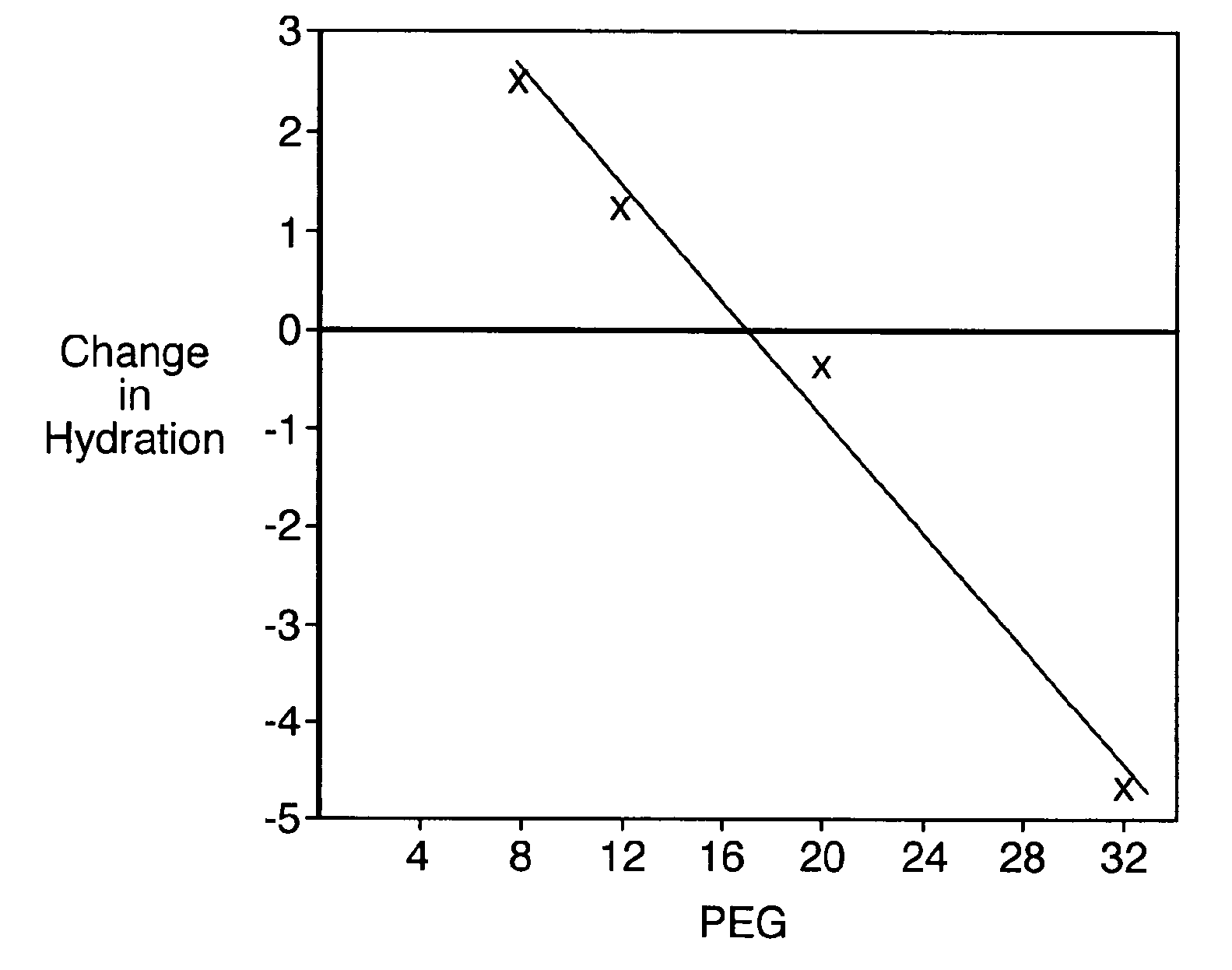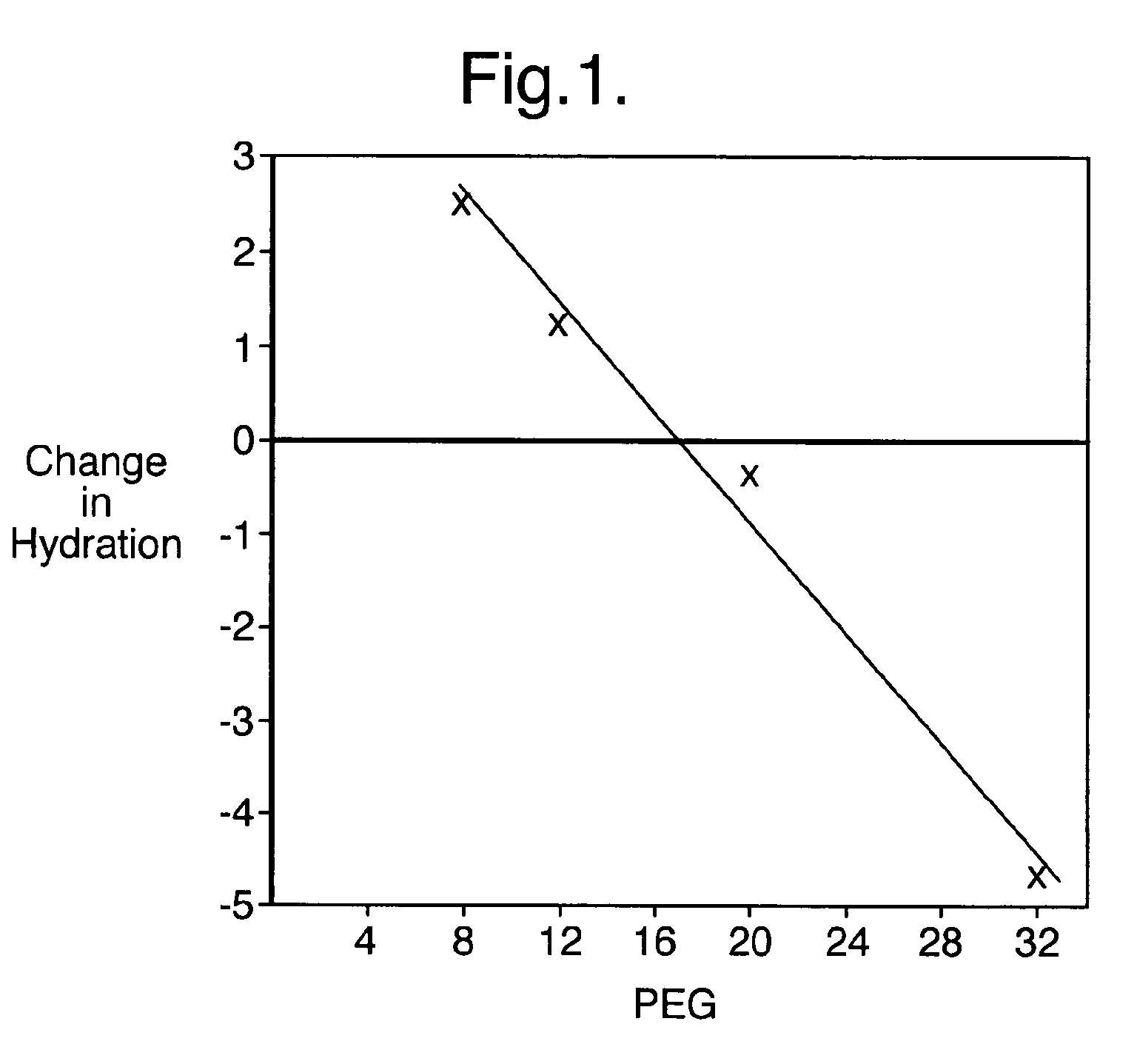Antiperspirant or Deodorant Compositions
a technology of antiperspirant and composition, applied in the field of antiperspirant and antiperspirant, can solve the problems of irritancy, loss of some degree of elasticity, and inability to absorb such humectants, and achieve the effect of counteracting irritancy
- Summary
- Abstract
- Description
- Claims
- Application Information
AI Technical Summary
Benefits of technology
Problems solved by technology
Method used
Image
Examples
examples
[0117]In the Examples herein, solid or soft compositions are made using the following ingredients:—
IngredientTrade nameSupplierOilscyclomethiconeDC245Dow Corning″DC345″″DC246″linearDC200 (50 cst)″high Rl linearDC556″non-silicone oilsmineral oilHydrobriteWitco1000USPhydrogenated polydeceneSilkflo 364AmocopetrolatumVaselineUnileveretherFluid APAmercholesterFinsolv TNFinetexisostearyl alcohol - ISAPrisorine 3515Uniqemaemollient oilsisopropyl myristate - IPMEstol 1514Uniqemasunflower seed oilAgri Pure 80Cargillborage seed oilborage oilJan DekkerPEGsPEG3tri(ethylene glycol)Sigma AldrichPEG4Carbowax 200Dow ChemicalsPEG43Polyglycol 200ClariantPEG6Polyglycol 300ClariantPEG8Carbowax 400Dow ChemicalsPEG84Polyglycol 400ClariantPEG12Polyglycol 600ClariantPEG125PEG 600Sigma AldrichPEG16Polyglycol 800ClariantPEG20Polyglycol 1000ClariantPEG32Polyglycol 1500ClariantPEG40PolyethyleneSigma AldrichGlycol 2000PolyethyleneSigma AldrichGlycol 3400Structurantsfatty alcoholLannetteCognisC18deoHigh MP wax, ...
examples 11 to 23
[0128]Further compositions in accordance with the instant invention are made by formulating products with the proportions of ingredients listed in Table 3 below. The sticks of Examples 15 to 20 are made by the standard process as for Examples 1 to 10. The sticks of Examples 11 to 14 are made by a modified process in which the amido or peptide structurant(s) is / are dissolved in a preliminary stage in the ISA by heating the mixture with stirring to around 90° C. The remaining oils and any remaining structurant are mixed and heated to about 85° C. The two fractions are combined and the resulting mixture is subsequently treated in the same way as in the standard process.
[0129]Examples 21 and 22 are made by a variation to the standard process in which the mixture containing all the ingredients that has been formed at an elevated temperature is cooled and subjected to high shear mixing during the cooling process until and through the quiescent setting temperature, so that the final produc...
examples 26 , 27
Examples 26, 27 and Comparisons C28, C29
[0144]These Examples and Comparisons demonstrate the comparative capability of PEG polymers of differing average molecular weight to moisturise skin in a 2 dayhydration test. The materials tested and the resultant change in hydration is summarised in Table 9 and the results plotted in FIG. 1.
[0145]The 2 day hydration test is conducted as follows, using at least 16 sites per material to be tested, subjects being aged between 18 and 55. The test employs a 4% by weight solution of the potential humectant in distilled water containing 0.5% by weight DMDMH and thickened with 1$% by weight hydroxyethylcellulose.
[0146]In the test, both volar forearms of each subject are employed, 3 sites per forearm. In each set of trials, baseline measurements of skin hydration are made for each site, followed by immediate application of test products randomised across the various test sites of the subjects. A second application of the same product is made 5 hours l...
PUM
| Property | Measurement | Unit |
|---|---|---|
| particle diameter | aaaaa | aaaaa |
| temperature | aaaaa | aaaaa |
| weight ratio | aaaaa | aaaaa |
Abstract
Description
Claims
Application Information
 Login to View More
Login to View More - R&D
- Intellectual Property
- Life Sciences
- Materials
- Tech Scout
- Unparalleled Data Quality
- Higher Quality Content
- 60% Fewer Hallucinations
Browse by: Latest US Patents, China's latest patents, Technical Efficacy Thesaurus, Application Domain, Technology Topic, Popular Technical Reports.
© 2025 PatSnap. All rights reserved.Legal|Privacy policy|Modern Slavery Act Transparency Statement|Sitemap|About US| Contact US: help@patsnap.com


